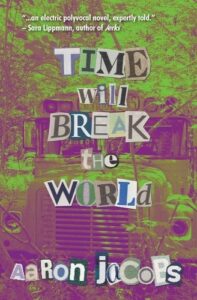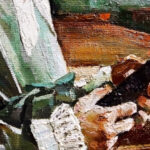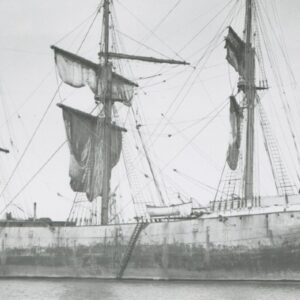On July 15th, 1976, in a small farming town in California’s central valley, three men wearing pantyhose masks and brandishing guns boarded a school bus on its afternoon route home and kidnapped the driver and twenty-six student passengers, some as young as five years old. For twelve hours, they drove the captives around in vans without ventilation, food, water, or bathroom breaks. Their destination was a stone quarry owned by the family of one of the gunmen, located over a hundred miles from where the police found the school bus. They instructed the victims to climb down a ladder into a hole in the ground that opened up into a buried moving truck. The truck was poorly stocked with mattresses, cut-outs in the floor for toilets, water, some food, and a couple of flashlights. The gunmen trapped the victims inside, essentially burying them alive.
As with many crimes, the motive behind this one was money. The kidnappers planned to extort $5 million from the state of California. Their plan was botched when jammed phone lines at the police station prevented them from making a ransom demand. Meanwhile, the victims succeeded in escaping. The Chowchilla Bus Kidnapping, as the incident became known, is still the largest kidnapping-for-ransom plot in American history. It is also the inspiration for my new novel, Time Will Break the World.
I first learned about the crime several years ago, in an article about Frederick Woods, one of the assailants, who at the time had been denied parole yet again (though he was released in 2021). Until then, I was completely unaware of him or what he had done. It seemed I wasn’t alone. I started asking people I knew if they had heard of Chowchilla, and no one had. I found it unbelievable that so shocking an incident, one that attracted worldwide media attention and drove President Gerald Ford to unleash the authority of the entire federal law enforcement apparatus, had been forgotten.
I knew the story was a novel and I wanted to write it. My original project was to write a fictionalized retelling of the Chowchilla kidnapping, “based on a true story.” All the necessary materials for a good book were right there: interesting characters, a compelling and tense plot, a unique setting, and life and death stakes.
The finished version of Time Will Break the World tells the story of gunmen who hijack a school bus and kidnap the passengers. The quarry is there and so is the daring escape. But something happened during the writing of the novel. Three kidnappers became two. The crime no longer took place in 1976, and the setting ended up thousands of miles away from California. An important subplot about the 1984 Summer Olympics emerged. Half the book took place thirty years after the abduction. None of the student characters were modeled on the real kids. It was clear I couldn’t say the novel was “based on a true story.” At best, it was “inspired by a true story.”
It might not seem as if there is much daylight between “based on” and “inspired by,” but the distinction is crucial. The main difference, I think, has to do with intent. Novels based on true stories have an interest in what really happened, even when certain elements are changed or elided. The actual event is central to the telling of the story. Novels inspired by true stories take aspects or the premise of an event to tell a story that while familiar in a broad sense, is upon closer inspection merely a backdrop to investigate topics and ideas that are important to the author and possibly unrelated to the episode that inspired it.
Little Deaths, the crime novel by Emma Flint, falls into the category of “based on a true story,” in this instance the arrest and trial of Alice Crimmins, a woman accused of murdering her two young children. The life of Ruth Malone, Little Deaths’ main character, shares many details with Crimmins. Both women were living lower-class lives in Queens in the mid-1960s, drinking and smoking and dating several men who weren’t their husbands. Like Alice, Ruth wakes up one morning to find her son and daughter missing from their bedroom. Their bodies are discovered soon after. The novel gives Ruth a resolution to her ordeal that Alice never received, while also inventing a reporter character through whom the reader sees the plot unfold. Besides that, however, the book nearly mirrors the Crimmins case. Specifically, it emphasizes the larger social perspective that the media focused on at the time. Both Alice and Ruth were accused not because of evidence—in fact no physical evidence tied them to the murders—but because they were judged to be bad mothers and bad women: promiscuous, boozy, and unapologetic. The way Flint renders the sexist beliefs of the period is the biggest strength of the novel and a compelling reason to stick with the actual incident as the novel’s guiding light.
A good example of a novel “inspired by a true story” is Room by Emma Donaghue. Donaghue claims the novel was “triggered” by the case of Josef Fritzl, an Austrian man who imprisoned his daughter Elizabeth in the basement of his house for 24 years, and impregnated her seven times. Ma, the young woman in Room, isn’t a captive of her father, but a stranger known in the book as Old Nick. She has one child by him, Jack. In the novel, Ma and Jack escape; in real life, a situation involving a serious illness of Elizabeth’s eldest daughter led police to the Fritzl’s home. But the important thing isn’t how similar the details are between reality and the novel. At its center, Room isn’t about the worst type of human evil, nor is it a tale of survival against the odds. Rather, Donoghue takes the premise of the Fritzl case to tell a story of motherhood and family under the most overwhelming of conditions. She even let’s five-year-old Jack narrate, a choice that lends a more experimental tone to the novel, and a decision no writer trying to adhere to the truth of a real moment would make.
In both “based on” and “inspired by” there are reasons why a writer veers from the truth. Some are practical: Often, not all of the facts are known, and the writer must speculate and fill in the blanks. No one knows what the Chowchilla kidnappers did between the time they forced the victims into the buried moving truck and when the kids escaped. In my novel, they went home and watched Mary-Lou Retton win the gold medal in gymnastics. Another reason could be fear of lawsuits. Thinly veiled portrayals might bear too much of a resemblance to the real people in our overly litigious country.
Finally, a novel is not life. The freshness and originality that a writer strives for on the page, the effortlessness, is in fact the result of a willful structure and style, trial and error, years of work. The most spontaneous seeming novel has nothing of the randomness of a boring Thursday. Life is complicated and prone to coincidences in ways that challenge strong writing, and storylines sometimes need to be trimmed or combined or cut altogether to make a coherent narrative.
As for why the writing of my novel started “based on” and ended “inspired by,” it came the moment I realized I had stopped being captivated by the kidnapping and was instead wondering what would happen long term to someone who went through it. If you’re abducted when you are 10, what does the rest of your life look like? Once the focus shifted for me, the project became something different, a chance to investigate how people’s lives turn out the way they do, and the stories we all tell to explain our lives.
***


















